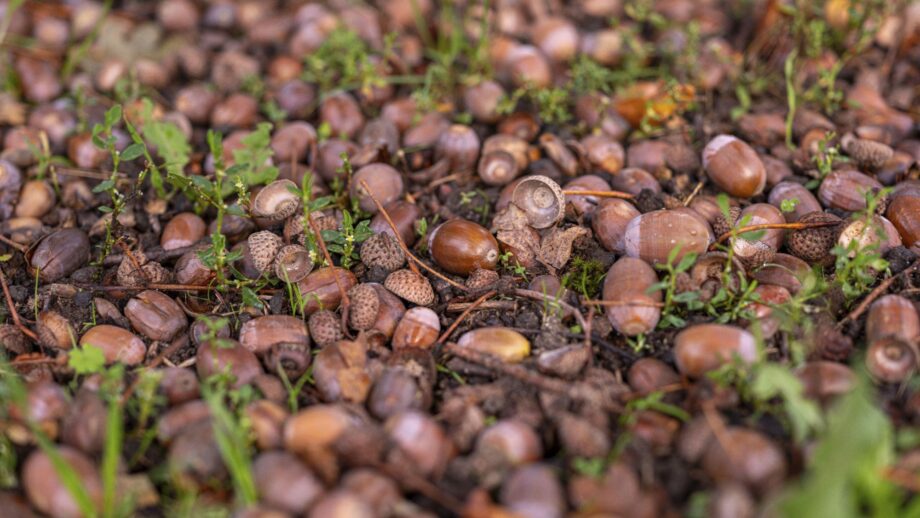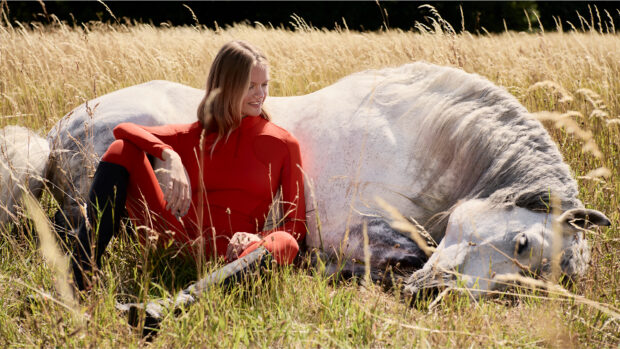Are acorns poisonous to horses? The short answer is yes, and you might have noticed more acorns on the ground than usual right now.
If you have, then it’s not just you. There are definitely more acorns – on trees and on the ground – this autumn, which is a cause for concern among horse owners. Acorns contain tannins that, when ingested by horses, produce toxins. These toxins can be poisonous, and lead to problems with the horse’s gut, liver and kidneys.
While some owners may have not experienced an issue with their horses eating acorns to date, every individual will have a difference tolerance level and exercising caution around horses’ access to acorns is strongly advised.
So, why so many acorns? It’s all because 2025 is proving to be a mast year for trees. If you’re not familiar with this term, read on for the lowdown, and the implications for horses.
What is a mast year?
According to the Woodland Trust, some species of trees and shrubs produce a bumper crop of their fruits or nuts every few years. The collective term for these fruits and nuts is “mast”, so it is referred to as a mast year.
But why do mast years occur? To produce a healthy crop, trees need the right combination of temperature and rainfall in the spring. Phenology – the study of the timing of natural events in relation to the weather – can help us better understand this.
Ecologist and senior lecturer at Liverpool University Dr Andrew Hacket Pain has used records from the Woodland Trust’s citizen science phenology project, Nature’s Calendar, to research masting.
“Oaks produce a similar number of flowers each spring, so the size of autumn’s acorn crop depends on how many of these flowers are able to mature into ripe acorns,” Dr Hacket Pain explains. “It’s clear that spring weather conditions are important. When spring is warm and dry, pollination of oak flowers is very effective, and this results in a large crop of acorns.”
Mast years are important in the bust and boom of small mammal populations. When the trees produce smaller crops for a few consecutive years, they are in effect keeping the populations of these animals in check. But during a mast year, the trees produce more food than the animals can possibly eat. This abundance leads to a boom in the populations of small mammals, such as mice. More importantly, it guarantees some nuts will be left over to survive and grow into new trees.
Are acorns more poisonous to horses in a mast year?
While it’s not clear acorns are any more toxic in a mast year, an obvious concern is the increased volume of acorns. After a period of high wind, you might notice a thick carpet of acorns underneath oak trees, which could be a problem if oaks line or sit inside your field boundary.
According to Pool House Equine Hospital, although acorns are naturally bitter-tasting, some horses can develop a liking for them. The vet clinic also reports a recent spike in veterinary cases linked to horses ingesting acorns.
Clinical signs of acorn poisoning in horses
The toxins produced by the ingested acorn tannins can cause damage to the gut, which can manifest as diarrhoea, which may contain blood, as well as signs of colic, lethargy, fever or a loss of appetite. If your horse is showing any of these signs, they will require urgent veterinary assistance so don’t delay in calling your vet.
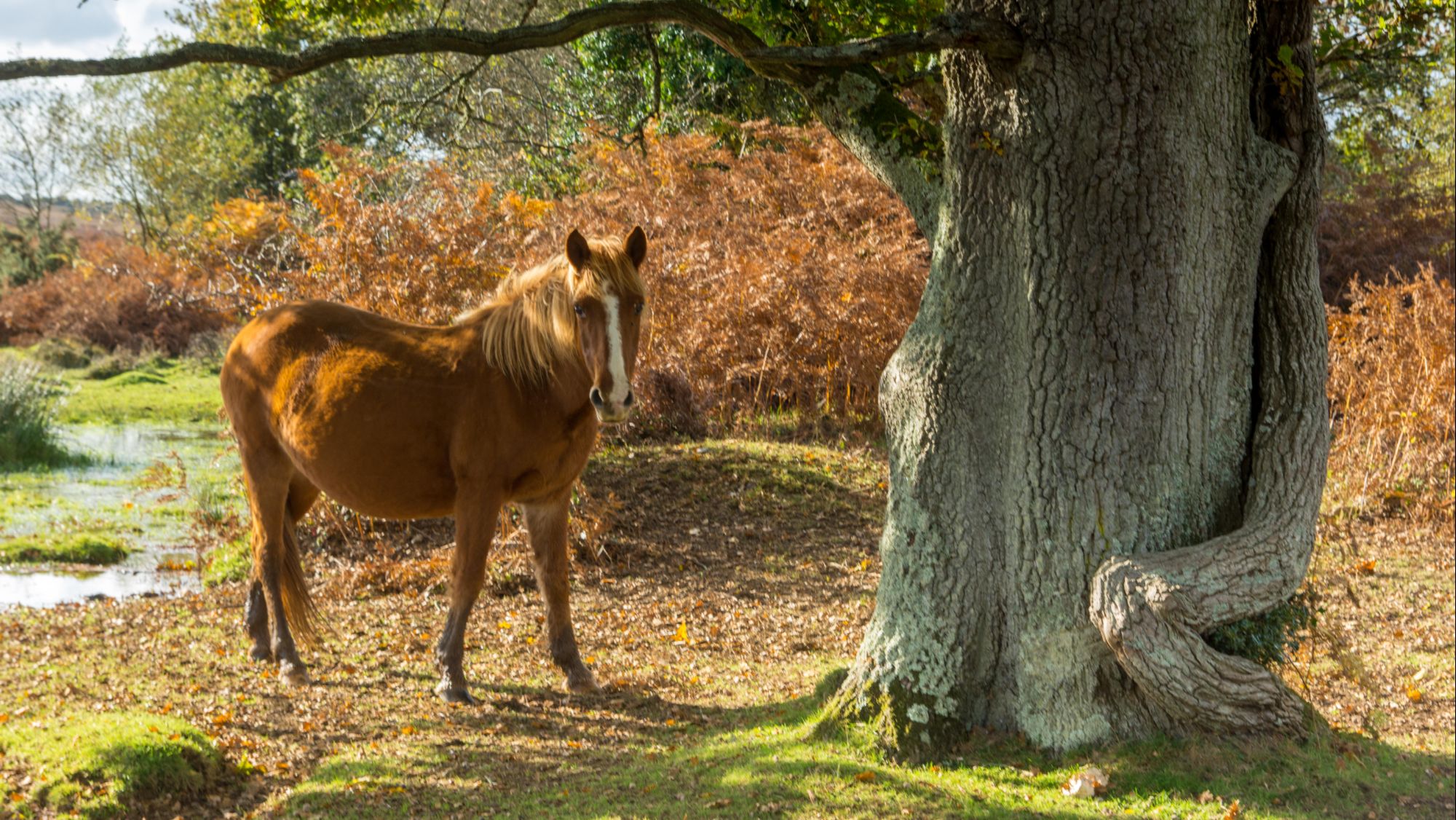
Owners are recommended to prevent horses from having access to acorns or grazing around oak trees. Credit: Alamy Stock Photo
Protecting against acorn poisoning in horses
You may notice acorn husks in your horse’s droppings before any clinical signs occur. However, if you think your horse might have access to acorns, don’t wait for evidence of ingesting or poisoning before you act.
You can protect your horse from eating acorns by…
- Identifying any oak trees in the vicinity of your horse’s turnout, so you know where hotspots might be
- If you poo pick, check these hotspots and collect acorns on your daily rounds
- Raking up fallen acorns, taking special care to check common drop zones after high winds. If you don’t have a rake, you could use a nut gatherer (like this one on Amazon)
- Temporarily fencing off parts of your paddock where fallen acorns are dense
- Extending your horse’s grazing (where autumn laminitis is low risk) or supplementing with forage to remove the temptation to feast on acorns
As always, if you are concerned about your horse’s appearing unwell, then seek urgent advice from your vet.
- To stay up to date with the latest horse care advice, subscribe to the Horse & Hound website
You may also be interested in:
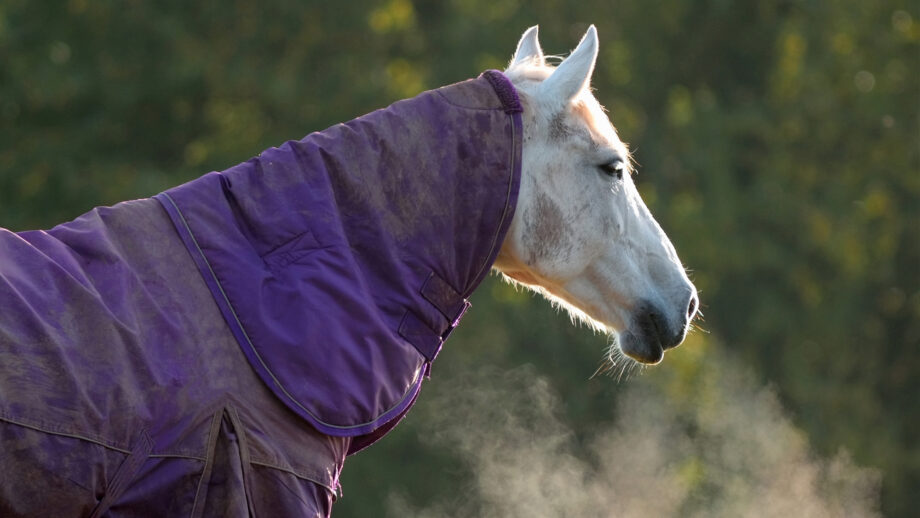
Which rug should I put on my horse? H&H’s helpful guide to help you decide
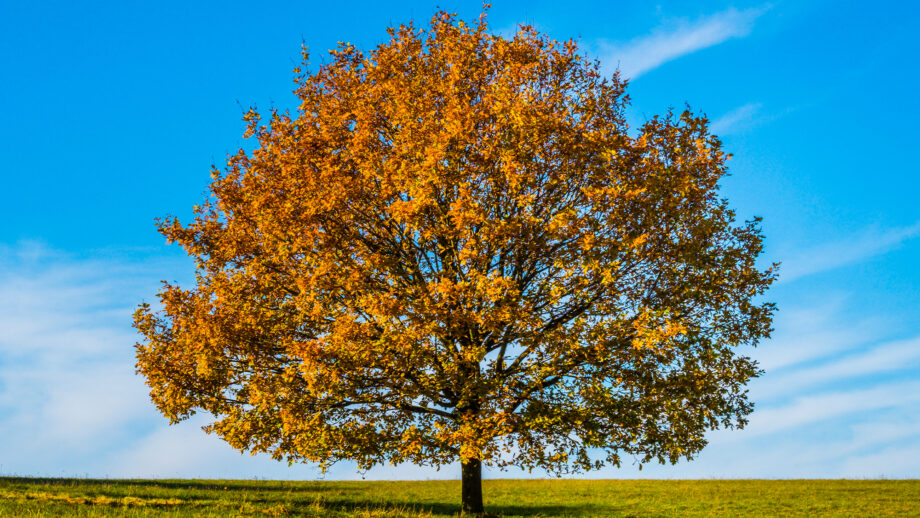
Atypical myopathy: what you need to know right now to keep your horses safe

Which type of clip is right for your horse? Check out H&H’s helpful guide

Subscribe to Horse & Hound magazine today – and enjoy unlimited website access all year round

